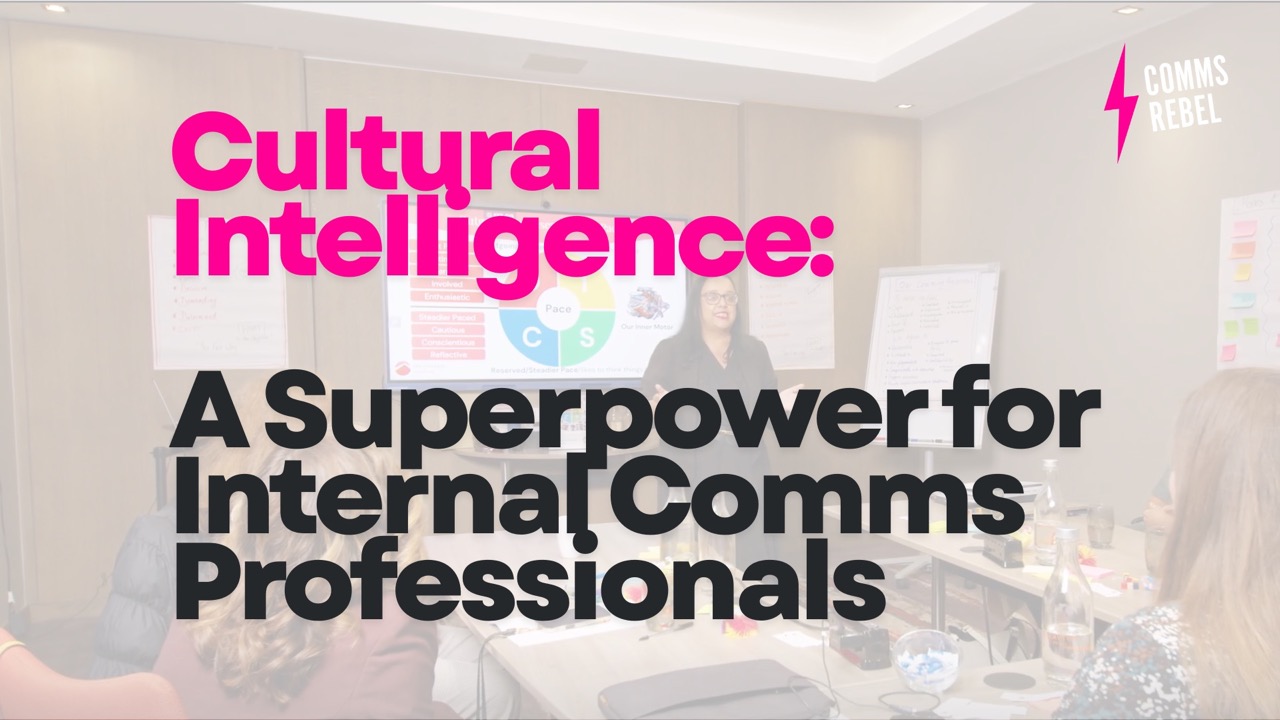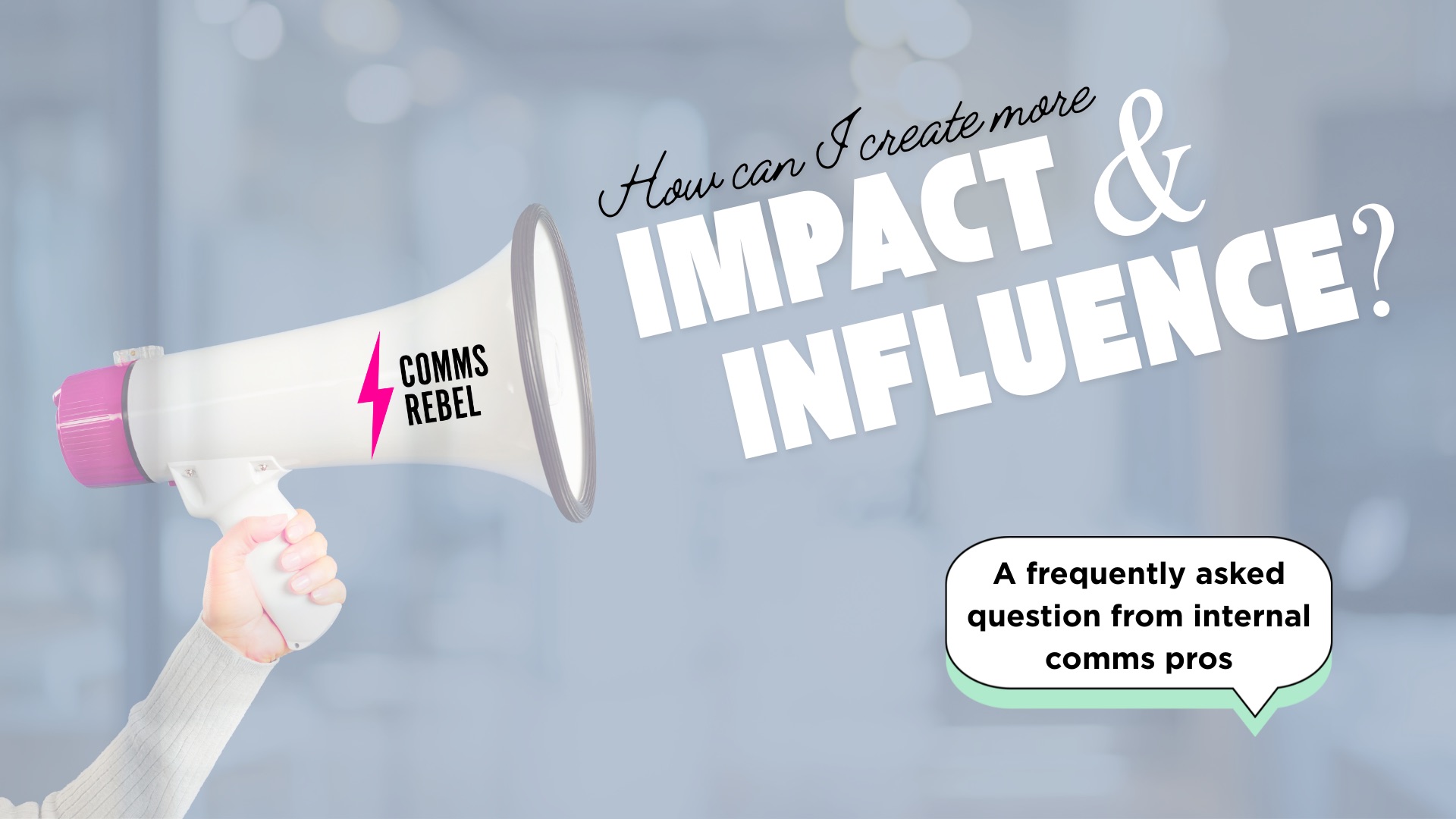We’re in a new era of communication. One where attention is a scarce commodity, and the average colleague is drowning in messages. Between Teams pings, back-to-back meetings, inbox overload, and the general chaos of daily life, it’s no wonder so many internal messages go unread, unnoticed, or ignored.
And that’s frustrating when you’ve spent time carefully crafting something that really matters.
So, how do you build internal communications that actually cut through in 2025?
Messages that land, stick, and most importantly, mean something?
The good news is it’s not about shouting louder. It’s about being smarter, sharper, and more intentional.
Here’s how.
1. The five-second test: Would you stop and read this?
This is your starting point.
Before you hit send, ask yourself honestly: Would I read this if it landed in my inbox? Would I care?
If the answer’s no, it’s time for a rethink.
Start strong. Make it clear why this message matters in the first line. Your subject lines and opening sentences do the heavy lifting, so ditch the corporate fluff and aim for curiosity, clarity, or connection.
Instead of: “Reminder: Updated policy documentation available”
Try: “New policy = less admin (finally)”
You’ve got seconds to grab attention. Don’t waste them.
2. Make it about them, not you
One of the biggest reasons comms falls flat? It’s written from the organisation’s point of view, not the colleagues.
People don’t engage with what you want them to know. They engage with what helps them do their job, understand a change, or feel like they’re part of something that matters.
Reframe your message by putting yourself in your audience’s shoes. Ask:
- What’s in it for them?
- How might this impact their day?
- What might they be feeling?
- What questions or objections might they have?
Tip: The most useful question you can ask before publishing anything? “So what?”
Keep asking it until you get to the core of what people need to hear and why they should care.
3. Lean into storytelling, not statements
If you want people to remember what you said, stop relying on stats and statements. Start telling stories.
Stories create emotion. They build context. They help people feel the message, not just understand it.
Bring your comms to life with:
- Real colleague experiences
- Customer quotes
- Short case studies
- Moments that show values in action
- Honest reflections from leaders (not just press release quotes)
And don’t underestimate the power of voice and video. A short, unscripted message from a senior leader recorded on their phone can feel more genuine than a perfectly polished statement.
Tip: Keep it natural. You’re not after Hollywood, you’re after human.
4. Think rhythm, not random
One-and-done messages rarely move the needle. If something really matters, it needs to be repeated, reinforced and reimagined over time.
Great internal comms works like a campaign, not a single post. It creates rhythm, consistency, and momentum.
Build a comms rhythm people can rely on:
- Weekly updates (short, snappy, clear)
- Monthly messages from leadership
- Timely reminders aligned to team meetings
- Channels people already use (like Slack or Teams)
Repetition doesn’t have to mean boring. Repetition with variation builds trust.
5. Use your data and be willing to flex
Data is your friend if you use it properly.
Start with the basics:
- Open rates
- Click-throughs
- Read time
- Intranet traffic
- Video views
- Reactions and comments
But don’t stop there. Talk to your people. Ask what’s landing and what’s missing. Pair data with dialogue.
And most importantly, act on what you find. If no one’s opening the Thursday afternoon email, maybe it’s time to change the slot. If your video views are dropping off after 30 seconds, trim your content. If your post is getting likes but no real engagement, rework the call to action.
Data doesn’t tell the full story, but it’s a valuable part of it.
Cut-through comms is a skill.
In 2025, effective internal communication means:
- Thinking like a storyteller
- Acting like a campaigner
- Listening like a coach
- Adapting like a strategist
You’re not just sending out messages. You’re helping people feel informed, valued, and connected in a workplace that’s more fast-paced, hybrid, and diverse than ever before.
So next time you’re about to publish something internally, take a breath and ask:
- Would this make me stop and read?
- Does this really matter to the people receiving it?
- Have I made it as clear, human and relevant as possible?
Because that’s what great internal communication looks like now.
And that’s how we earn attention, not just ask for it.
Looking to level up your internal comms? Let’s chat. Whether it’s audits, change campaigns, or building a confident workplace where people can thrive, we’d love to support you. Book a free discovery call.


